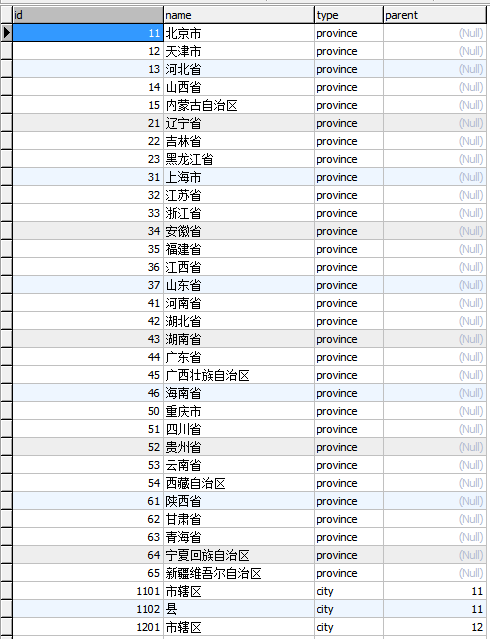
# coding=utf-8
# Creeper
import os
import bs4
import time
import MySQLdb
import urllib2
import datetime
import warnings
import traceback
import ConfigParser
try:
basedir = os.path.dirname(os.path.abspath(__file__))
except NameError:
import sys
basedir = os.path.dirname(os.path.abspath(sys.argv[0]))
SETTINGS_FILE = os.path.join(basedir, 'settings.ini')
GLOBAL_CONFIG = {
'server': {
'debug': False,
},
'db': {
'host': '127.0.0.1',
'port': '3306',
'user': 'root',
'password': '',
'dbname': 'test',
'table': 'group'
}
}
def __config(item):
GLOBAL_CONFIG[sec][item[0]] = item[1]
try:
parser = ConfigParser.ConfigParser()
parser.readfp(open(SETTINGS_FILE))
for sec in parser.sections():
map(__config, parser.items(sec))
except:
print 'settings.ini needed'
raise
N = 0
class Handle(object):
def __init__(self, *args, **kwargs):
super(Handle, self).__init__()
self.db = {}
self.conn = None
self.cursor = None
self._cursor(**kwargs)
def _cursor(self, **kwargs):
self.db.update(**kwargs)
host = kwargs.get('host', '127.0.0.1')
port = int(kwargs.get('port', 3306))
user = kwargs.get('user', 'root')
pwd = kwargs.get('password', '')
dbname = kwargs.get('dbname', 'test')
charset = kwargs.get('charset', 'utf8')
_conn = MySQLdb.connect(user=user, passwd=pwd,
host=host, port=port, charset=charset)
try:
_conn.select_db(dbname)
except:
sql = """CREATE DATABASE IF NOT EXISTS `%s` DEFAULT CHARSET utf8 COLLATE utf8_general_ci;
""" % dbname
_conn.cursor().execute(sql)
_conn.select_db(dbname)
self.conn = _conn
self.cursor = _conn.cursor()
def format_pk(self, pk, index):
d = {1:2, 2:4, 3:6, 4:9, 5:12}
try:
pk = int(float(pk))
except:
raise ValueError, 'the primary key must be integer or string interger'
return int(str(pk)[:d[index]])
while (pk * 1.0 / 10).is_integer():
pk = pk * 1.0 / 10
return pk < 10 and int(pk) * 10 or int(pk)
def do_execute(self, pk, name, type, parent='NULL'):
global N
now = datetime.datetime.now().strftime('%Y-%m-%d %H:%M:%S %f')
if N%100 == 0 and N != 0:
print 'Total: %s ---%s' % (N, now)
# time.sleep(5)
if not parent or parent == '':
parent = 'NULL'
sql = """INSERT INTO `%s` (`id`, `name`, `type`, `parent`) VALUES(%s, '%s', '%s', %s);
""" % (self.db['table'], pk, name, type, parent)
try:
self.cursor.execute(sql)
self.conn.commit()
print '+',
N += 1
except MySQLdb.Warning, w:
print "
Warning:%s" % str(w)
print '#',
except MySQLdb.Error, e:
if not 'Duplicate entry' in str(e):
print "
Error:%s" % str(e)
self.debug(pk, name)
self.debug(pk, parent)
else:
print '=',
self.debug(pk, name)
except:
traceback.print_exc()
print '?',
def do_executemany(self, items, params=None):
sql = """INSERT INTO `%s` (`id`, `name`, `type`, `parent`) VALUES """ % self.db['table']
sql +="(%s, %s, %s, %s)";
try:
self.cursor.executemany(sql, items)
self.conn.commit()
except MySQLdb.Error, e:
print "Error:%s" % str(e)
except:
traceback.print_exc()
class Creeper(Handle):
def __init__(self, *args, **kwargs):
Handle.__init__(self, *args, **kwargs)
self.init_db()
self.root_url = ''
self._type = {1:'province',2:'city',3:'county',4:'town',5:'village'}
def init_db(self):
__sql = """CREATE TABLE IF NOT EXISTS `%s` (
`id` bigint(20) NOT NULL,
`name` varchar(30) NOT NULL,
`type` varchar(30) NOT NULL,
`parent` bigint(20) DEFAULT NULL,
PRIMARY KEY (`id`),
KEY `Group_12345` (`name`),
KEY `Group_67890` (`parent`),
FOREIGN KEY(parent) REFERENCES `%s` (`id`)
) ENGINE=InnoDB DEFAULT CHARSET=utf8;
""" % (self.db['table'], self.db['table'])
try:
self.cursor.execute(__sql)
self.cursor.execute("""CREATE TABLE IF NOT EXISTS `debug` (
`id` int(11) NOT NULL AUTO_INCREMENT,
`badid` bigint(20) NOT NULL,
`others` varchar(256) DEFAULT NULL,
PRIMARY KEY (`id`)
) ENGINE=InnoDB DEFAULT CHARSET=utf8;""")
self.conn.commit()
except MySQLdb.Warning, w:
if not 'already exists' in str(w):
print "Warning:%s" % str(w)
except MySQLdb.Error, e:
print "Error:%s" % str(e)
traceback.print_exc()
except:
traceback.print_exc()
pass
def debug(self, *args):
try:
_sql = """INSERT INTO `debug` (`badid`, `others`) VALUES(%s, '%s');
""" % (args[0], args[1])
self.cursor.execute(_sql)
self.conn.commit()
except:
traceback.print_exc()
finally:
return
def __get_url(self, tup, index):
id = tup[0]
parent = tup[-1]
__url = []
for i in range(0, index, 2):
__url.append(str(id)[i: i+2])
__url.append(str(id))
return self.root_url + '/'.join(__url) + '.html'
def format_tag(self, x_tag, url, index, limit=None):
if limit and index > limit: return
parent = str(url.split('/2013/')[1].split('/')[-1])[:-5]
__type = self._type[index]
__parent = not parent and 'NULL' or parent
if isinstance(x_tag, bs4.element.Tag) and x_tag.has_attr('href'):
print '.',
href = x_tag['href']
child_url = '/'.join(url.split('/')[:-1])
full_url = '/'.join([child_url, href])
__pk = self.format_pk(href.split('.html')[0].split('/')[-1], index)
__name = x_tag.text
i = (__pk, __name, __type, __parent)
self.do_execute(*i)
self.get_info(full_url, index + 1, limit)
else:
print '*',
__pk = self.format_pk(x_tag[0].text, index)
__name = x_tag[1].text
self.do_execute(__pk, __name, __type, __parent)
def get_info(self, url, index, limit=None):
# 解析页面,获取目标区域的数据
# 获取单元数据,格式化为可供插入数据库的元组
try:
__html = urllib2.urlopen(url).read()
__soup = bs4.BeautifulSoup(__html, from_encoding='gbk')
__tr = __soup('tr', class_='%str' % self._type[index])
except:
try:
self.debug(0, url)
except:
traceback.print_exc()
finally:
return
__lst = []
for tr in __tr:
# 每个tr中的多个td代表多个省
if index == 1:
for td in tr('td'):
__lst.extend(td('a'))
continue
# 每个tr中的多个td代表一个节点,取最后一个td中的a标签
if tr('td')[-1]('a'):
__lst.extend(tr('td')[-1]('a'))
else:
# 没有子节点的元素,单纯的通过td中的数据创建
self.format_tag([tr('td')[0], tr('td')[-1]], url, index, limit)
for a in __lst:
self.format_tag(a, url, index, limit)
def do_get_childs(self, index):
# 1. 查询获取当前层级节点数目
_sql = """SELECT COUNT( * ) FROM `%s` WHERE `type`='%s';
""" % (self.db['table'], self._type[index])
self.cursor.execute(_sql)
total = self.cursor.fetchone()[0]
# 2. 遍历父节点,获取子节点数据
for i in range(0, total, 30):
_sql = """SELECT `id`, `parent` FROM `%s` WHERE `type` = '%s' LIMIT %s, %s;
""" % (self.db['table'], self._type[index], i, i+30)
self.cursor.execute(_sql)
id_and_parent = list(set(self.cursor.fetchall()))
for tup in id_and_parent:
url = self.__get_url(tup, index)
self.get_info(url, index+1)
warnings.filterwarnings('error', category = MySQLdb.Warning)
del warnings
if __name__ == '__main__':
url = "http://www.stats.gov.cn/tjsj/tjbz/tjyqhdmhcxhfdm/2013/"
db_config = GLOBAL_CONFIG['db']
g = Creeper(**db_config)
g.root_url = url
g.init_db()
lst = g.get_info(url, index=1, limit=5)
# g.do_get_childs(3)
